Laurie Anne Walden, DVM  It can be fun to choose cute winter wear for your dog (and we love seeing the adorable sweaters on dogs coming into the clinic!). But does your dog really need winter clothing? It depends. Dogs do not all have the same tolerance for low temperatures. Dogs in the same household might have completely different attitudes about going outdoors in winter, so pay attention to your dog’s preferences and use common sense. Which Dogs Need Winter Clothing? Outdoor temperature, weather conditions, length of time outdoors, and level of activity (a leisurely stroll around the block versus a 5-mile run) all affect a dog’s need for extra protection. Also take the following dog-specific factors into account. Type of Fur Some dogs’ natural coats are like a puffer jacket; others are more akin to a thin T-shirt. The length of the hair isn’t the only consideration. Dogs with thick undercoats, or double coats, are better protected against the cold than those with single coats. Golden retrievers and Maltese both have long hair, but goldens stay warmer—and shed a lot more—because of their double coat. Goldens are also bigger than Maltese, which brings us to the next point. Size of the Dog In general, small dogs like Chihuahuas and toy poodles don’t handle cold weather as well as large dogs like retrievers and shepherds. This partly depends on the individual dog, but little dogs lose heat more easily than big dogs because their body surface area is higher relative to their weight. Age and Health Status Young puppies, senior dogs, and dogs with health problems (arthritis, endocrine disorders like hypothyroidism, and so forth) have a harder time maintaining their body temperature in cold weather than healthy adult dogs do. Breed Breeds that were developed to live in cold climates (like Newfoundlands and Bernese mountain dogs) are obviously better equipped for winter weather than greyhounds and the hairless breeds. Some breeds (and individual dogs) are just better acclimated to cold weather than others. Signs That Your Dog Needs a Coat Watch your dog for signs of discomfort in the cold:
If your dog has significant shivering or reluctance to move that doesn’t improve soon after coming inside to warm up, take him to a veterinary clinic to be checked for hypothermia. (Hypothermia is unlikely to happen in dogs in the Charlotte area who are outdoors under direct supervision for a reasonable length of time. It can affect dogs left outside in cold weather without adequate shelter.) Clothing is not a substitute for warm shelter. Which Dogs Shouldn’t Wear Clothes? Dogs can overheat if they’re wearing a coat they don’t need. There’s a reason sled dogs don’t wear parkas while they’re running the Iditarod. These dogs don’t need to be wearing clothes:
How to Choose Dog Clothing Sweaters, jackets, and coats should fit closely enough not to drag on the ground or become tangled around the dog’s legs. However, clothing shouldn’t be tight around the neck or restrict the dog’s movement. Clothing should have no loose hanging bits that could get snagged on something or that the dog might chew. Dog clothing shouldn’t get in the way of urination and defecation (most dog coats are open under the belly and tail). Choose materials that are appropriate for the weather and easy to clean. And if your dog hates his clothes, don’t force the issue. Introduce new clothing gradually and try different materials and fits if you need to. See more cold weather safety tips here: https://www.mallardcreekvet.com/dr-waldens-blog/cold-weather-safety-for-pets. Photo by Rebecca Johnson, DVM
0 Comments
Laurie Anne Walden, DVM  It’s tempting to share some of the Thanksgiving feast with our pets. Not all human food is safe for dogs and cats, though. The best way to avoid a holiday trip to the emergency clinic is to give pets their usual food and keep table food out of their reach. If you (or your guests) do want to give your pets a little bit of holiday food, though, here are some suggestions that are fine for most dogs and cats. Keep in mind a few rules of thumb. Don’t give them anything that’s dangerous to dogs and cats: fatty food, bones, raw meat, raw eggs, raisins, grapes, currants, onions, garlic, leeks, raw yeast dough, macadamia nuts, chocolate, and the sugar substitute xylitol. For more, see the posts on Thanksgiving safety for pets and human foods that are toxic to pets. Unseasoned single-ingredient foods are safer than multiple-ingredient dishes because they’re less likely to contain hidden dangers like onion. Moderation is key; too much of any food can upset a pet’s stomach. And remember that these suggestions don’t apply to pets with food allergies or digestive problems. Turkey breast A bite of cooked skinless, boneless turkey meat is safe for most dogs and cats. Keep portion size in mind; a 10-lb dog or cat does not need the same amount of turkey that a person would eat. Take these precautions:
Defatted turkey or chicken broth Pan drippings and gravy are too high in fat for dogs and cats. But a spoonful or two of defatted broth is usually fine for dogs. Don’t give broth to your cat unless you can be absolutely sure it wasn’t made with onions, leeks, shallots, or garlic; try tuna juice instead. Vegetables and fruits Dogs like vegetables more than you might think. Avoid grapes, raisins, currants, veggies cooked with fat or butter, and vegetable casseroles (that green bean casserole with the crispy onions on top? no). Stick with plain veggies and fruits, either raw or cooked without seasoning. My own dogs highly recommend all of these:
Bread A small piece of bread, cornbread, or biscuit is generally safe for dogs and cats. Keep unbaked dough out of their reach; raw yeast dough can cause ethanol poisoning. Watch for added fats and seasonings (no onion focaccia or garlic bread). A bite of plain bread is safer than dressing or stuffing, which is likely to contain fat, onion, and possibly raisins or currants. Also avoid store-bought baked goods that might contain artificial sweeteners like xylitol. For pets eating prescription or limited-ingredient diets The best approach for pets with medical needs or food allergies is to close them in a room away from the kitchen and dining area. Guests might not realize that these pets have dietary restrictions. If your pet is eating a special diet and you’d like to give treats, ask your veterinarian for safe options. Some prescription diet manufacturers have developed treats that are compatible with their diets. Photo by Charles 🇵🇭 Laurie Anne Walden, DVM 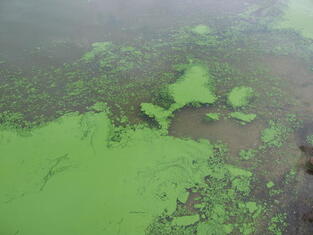 Algal blooms on Binder Lake, Iowa. Photo by Dr Jennifer L. Graham, US Geological Survey (public domain). Algal blooms on Binder Lake, Iowa. Photo by Dr Jennifer L. Graham, US Geological Survey (public domain). Toxins from algae in a pond killed 3 dogs in Wilmington earlier this month. The same type of algae has been found in a public park pond in Charlotte. The only way to know if algae is harmful is by testing the water in a laboratory, so for safety, keep your dog away from all scummy or discolored water. Harmful Algal Blooms Algae are tiny plantlike organisms that live in water. Some algae produce toxins that cause serious illness. Under certain conditions, algae grow quickly into collections called algal blooms. Algal blooms are most likely to form in warm water that is high in nutrients like nitrogen. Hot weather and stagnant water increase the chance of algal growth. Algal blooms can form in either fresh or salt water. The most common type of harmful algae in fresh water is cyanobacteria, or blue-green algae. Another type of algae causes red tide in salt water. Avoid water with signs of potentially harmful algal blooms:
Symptoms of Exposure People and animals can be exposed to algal toxins through skin contact with contaminated water, by drinking contaminated water or eating contaminated food (like fish), or by inhaling water droplets in windblown spray. Dogs are typically exposed when they play or wade at the edges of bodies of water with algal blooms. Not all algal blooms are toxic. But with some types of algae, exposure to only a small amount of toxin can be fatal within hours or days. Algal toxins can damage the liver, nervous system, kidneys, and digestive tract. Symptoms depend on the type of toxin and the amount of exposure and include the following:
What to Do if Your Pet Is Exposed If your dog comes in contact with questionable fresh or salt water, bathe or at least rinse him off with clean (tap) water right away, before he licks his fur. Take precautions to avoid exposure to yourself; wear gloves or wash your hands after rinsing your dog. Take your dog to a veterinary clinic if she has swallowed water containing algae or has licked her fur after wading in water with an algal bloom. Symptoms of toxin exposure constitute a medical emergency, so seek veterinary care immediately if your dog is vomiting or stumbling after water contact. Prevention The Centers for Disease Control and Prevention (CDC) and the NC Department of Health and Human Services (DHHS) recommend these precautions:
More Information Cyanobacteria: Protecting Children & Dogs (NCDHHS): https://epi.dph.ncdhhs.gov/oee/algae/protect.html Harmful Algal Bloom (HAB)-Associated Illness (CDC): https://www.cdc.gov/habs/index.html Photo source: https://www.usgs.gov/media/images/harmful-algal-blooms-6 Laurie Anne Walden, DVM  Dog urine can turn grass yellow or brown. Lots of other things can also cause grass to die or change color, so before you blame your dog, make sure the grass spots really are caused by dog urine (you might need to consult a lawn care specialist). Why Does Urine Discolor Grass? Dog urine contains nitrogen, which is produced by the body’s normal breakdown of protein. Nitrogen helps plants grow, but too much nitrogen damages plants, causing “burn” or “scald.” Fertilizers are designed to deliver the right amount of nitrogen at specific application rates. A small amount of nitrogen from dog urine can act as a fertilizer, so a patch of urine-scalded lawn might be surrounded by a ring of healthy green grass where the urine was less concentrated. Urine also contains salts and is often a bit acidic. Salts and acid can damage plants, but nitrogen is the main reason that urine discolors grass. Female dogs may be more likely than male dogs to cause urine spots on grass because they usually urinate large amounts in one location. Male dogs tend to urinate small volumes in lots of different places. But male dogs who urinate a lot in one area can also cause lawn burn. How to Prevent Urine Spots on Grass If urine spots on the lawn are new for your dog, consult your veterinarian. Your dog might need a urinalysis to check for a medical problem, like a urinary tract infection, that has changed the properties of the urine. Don’t treat a healthy dog for a grass problem. Don’t change to a low-protein diet or feed any supplements or foods that claim to change the urine chemistry or pH (unless your veterinarian has diagnosed a medical condition that needs these treatments). These products could be risky for a dog who doesn’t need them and probably won’t solve the grass discoloration anyway. These methods are safe for your dog:
Photo by 78Li Laurie Anne Walden, DVM 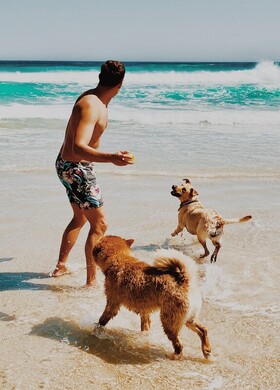
Photo by Ian Badenhorst on Unsplash Laurie Anne Walden, DVM 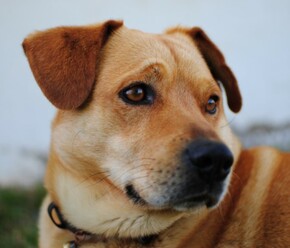 Antifreeze is toxic to animals and people. Even a small amount of antifreeze licked from a paw or lapped from a puddle could kill a cat or dog. If you think your pet has been exposed to antifreeze, contact a veterinarian immediately. The main ingredient of most types of antifreeze is ethylene glycol, a type of alcohol. Ethylene glycol has a naturally sweet taste. Protect your pets by keeping them away from fluids that have leaked out of cars. Store antifreeze in sealed containers out of the reach of animals and children. Consider using antifreeze made of propylene glycol instead of ethylene glycol; it’s safer for pets. Sources of ethylene glycol Antifreeze (radiator coolant) is used in the engines of cars and other motor vehicles. The risk of exposure might be higher when seasons change and people change the antifreeze in their cars. Dogs have also been poisoned by drinking toilet water that has had antifreeze added to keep it from freezing.[1] Although antifreeze is the most common source of ethylene glycol poisoning in dogs and cats, ethylene glycol can be present in other products:
Signs of poisoning The earliest symptoms are caused by the ethylene glycol itself. Symptoms that appear later are caused by toxic substances produced when ethylene glycol is broken down in the liver. The symptoms of poisoning occur in 3 stages.[4] Stage 1: During the first 12 hours, symptoms are similar to those of alcohol intoxication:
Stage 2: From about 12 to 24 hours after ingestion, the animal may seem to improve as “drunken” symptoms go away. But toxic products of ethylene glycol begin to alter the body’s acid-base balance and damage the kidneys. Signs include the following:
Stage 3: Between 12 and 24 hours after exposure (cats) or 36 and 72 hours (dogs), the kidneys stop working. The patient shows symptoms of acute kidney failure and other problems:
Diagnosis and treatment A blood test can detect ethylene glycol in the first few hours after ingestion. After a few hours, blood and urine tests begin to show evidence of acid-base disturbances and kidney damage. Diagnosing ethylene glycol poisoning can be tricky if no one saw the pet swallow antifreeze and the pet doesn’t arrive at the veterinary clinic until it is showing signs of kidney failure. The sooner treatment begins, the better the prognosis. An antidote to ethylene glycol is available and should be given soon after exposure. This drug stops ethylene glycol from being converted to toxic substances. After most of the ethylene glycol has been metabolized by the liver, the antidote is less likely to be effective. Other treatment is given to correct the body’s acid-base balance and support kidney function. Pets with ethylene glycol poisoning will probably need to stay in the hospital for a few days, even if the poisoning is caught early. Prognosis The prognosis is good for animals that begin treatment soon after ingesting antifreeze. For those that develop kidney failure, the prognosis is guarded to poor. References 1. Antifreeze poisoning in dogs & cats (ethylene glycol poisoning). Pet Poison Helpline website. https://www.petpoisonhelpline.com/pet-safety-tips/antifreeze-poisoning-in-dogs-cats-ethylene-glycol-poisoning/. Accessed March 11, 2019. 2. Grauer GF. Overview of ethylene glycol toxicity. Merck Veterinary Manual website. https://www.merckvetmanual.com/toxicology/ethylene-glycol-toxicity/overview-of-ethylene-glycol-toxicity. Accessed March 11, 2019. 3. ToxFAQs for ethylene glycol. Agency for Toxic Substances and Disease Registry website. https://www.atsdr.cdc.gov/toxfaqs/tf.asp?id=85&tid=21. Published November 2010. Accessed March 11, 2019. 4. Brownie CF. Managing ethylene glycol toxicity (proceedings). DVM360 website. http://veterinarycalendar.dvm360.com/managing-ethylene-glycol-toxicity-proceedings. Published August 1, 2010. Accessed March 11, 2019. Photo by Ana Silva on Unsplash Laurie Anne Walden, DVM 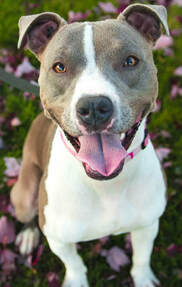 Are you tempted to skip your pets' heartworm and flea medicines during the winter? Dogs and cats actually need parasite prevention all year round. Year-round parasite control for pets helps keep the whole family safe from parasite-transmitted disease. Warm spells during the winter are common in North Carolina, so we can’t count on cold temperatures to suppress insects that carry disease. Mosquitoes, fleas, and ticks can also live through the winter in areas that are protected from the cold. Heartworms Heartworms are transmitted by mosquitoes. Mosquitoes become active when the temperature rises above about 50°F (which happens routinely in North Carolina during the winter). But occasional warm winter days aren’t the only reason pets need year-round heartworm prevention. Heartworm preventives work by killing tiny heartworm larvae that are already in an animal’s bloodstream. These larvae came from mosquitoes that bit the animal in the past month or more. Skipping a month of heartworm prevention could mean that your dog isn’t protected from heartworm larvae that he was exposed to when it was warmer. The American Heartworm Society recommends giving heartworm preventives all year round. Intestinal parasites (worms) Some heartworm preventives also control intestinal parasites like hookworms and roundworms. These parasites can infect humans too. Giving parasite prevention to your pets throughout the year is a sensible safety measure. Fleas Fleas don’t just causing itching. They also transmit diseases like cat scratch disease, tapeworms, and plague. Fleas lay eggs that drop off the infested animal into the environment. This means that flea eggs are present everywhere the animal has been, including inside a home. After the eggs hatch, the larvae and pupae (intermediate stages) can stay dormant for weeks to months before becoming adult fleas. Because fleas can go through their life cycle indoors, they don’t need to wait for warm weather to develop into adult fleas. Flea infestations are easier to prevent than to treat, so the best chance of avoiding a flea problem is to give your pets year-round flea prevention. Ticks Ticks carry many diseases that affect both pets and people. Some tick species, including the type that transmits Lyme disease, are active during the winter when the temperature is above freezing. Ticks tend to live in leaf litter, crevices of buildings, and underbrush. When they’re ready to take a blood meal, they move to grassy areas or shrubbery near paths and latch onto a passing animal or person. Ticks can be hard to see through fur, so you might not realize that your dog has picked up a tick. Because of the risk of serious disease, the safest approach is to limit tick exposure: control ticks around your home and give your pets tick preventives recommended by your veterinarian. Photo by Justin Veenema Laurie Anne Walden, DVM  ’Tis the season for charitable giving. What better way to honor our pets than to help other animals and the people who take care of them? Donate Money Local animal shelters and rescue groups can always use financial contributions. Money donated to national organizations may not find its way to local groups. Consider making a donation in memory of a pet you’ve lost. Memorial donations can also be thoughtful gifts for other animal lovers. The choice of charity is personal (and if you’re making a donation on someone else’s behalf, it’s a good idea to send it to one of their favorite charities). You might want to donate to an organization that funds research on animal health, like the Morris Animal Foundation, the Winn Feline Foundation, or a veterinary school. Do you have a friend or family member with a new dog or cat but not a lot of cash? The cost of vaccinations, spaying/neutering, and preventive medicine (like heartworm pills) adds up. They might appreciate a contribution to a health care fund for their new pet. Donate Pet Food or Supplies Our hungry neighbors need help feeding their pets too, and some food banks accept pet food donations. Mallard Creek Animal Hospital is holding a pet food drive for Second Harvest Food Bank through December 30, 2018. Drop off food or cash donations at the office. We (and the animals) are grateful for our clients’ generosity! Shelters and rescue groups usually need pet food, towels, blankets, cleaning supplies, training toys, cat scratching pads, and other items. Check with the organization before donating supplies; many post wish lists on their websites. Volunteer Shelters and rescue groups depend on volunteers. Some volunteer positions require training and an ongoing time commitment. If you have only a few hours, consider hosting a pet food or supply drive or holding a fundraiser. Need community service hours for school or an organization? Minor children usually can’t work directly with shelter animals, but children can set up donation drives or fundraisers like lemonade stands. Kids can also make pet items (like small blankets or catnip toys) at home and then deliver them to the shelter—but as always, check with the shelter first. Foster a Rescue Animal Do you have time, space in your home, and the right family (and pet) situation for a temporary house guest? Many rescue groups depend on fosters to house animals awaiting adoption. Animals in shelters also benefit from spending time in a foster home. Animals in foster care may have medical or behavioral issues that need to be addressed before they’re ready for adoption, so discuss the foster requirements with the rescue group. Are you a cat person? Charlotte-Mecklenburg Animal Control needs people to foster kittens at home or help out in the kitten nursery. Adopt an Animal Adopting is a great way to help—but never give an animal as a gift! The exception is adopting a pet into your own household (when you’re prepared to take lifelong care of it) as a “gift” for the family. If you want to give a pet to someone else, consider instead giving them money or a homemade gift certificate toward the adoption or purchase of a pet of their choice when they're ready. Photo by uschi2807 Laurie Anne Walden, DVM  Keep your pets safe, happy, and out of the emergency clinic with these Thanksgiving safety tips. No fatty food Turkey skin, meat drippings, gravy, bacon, butter, and other fatty foods can cause pancreatitis (inflammation of the pancreas) in dogs. This potentially painful condition leads to vomiting, loss of appetite, and dehydration. Pancreatitis can land a dog in the veterinary hospital for intensive care. Any dog can develop pancreatitis, but some breeds are more prone to it than others. Miniature schnauzers are the poster dogs for pancreatitis. No bones Don’t give your pet a turkey leg. Bones can get stuck in the digestive tract (esophagus, stomach, or intestines). Sharp bones can puncture the digestive tract. No turkey brine The solution used to brine turkeys might taste great to pets, but the high salt content can lead to salt toxicosis. Symptoms include vomiting, diarrhea, loss of appetite, increased thirst, tremors, and seizures. No raw meat or raw eggs Raw meat and eggs can carry harmful bacteria like salmonella. Dogs and cats are just as susceptible to food poisoning from bacteria as humans are. No raisins, grapes, or currants Even small amounts of these fruits can cause kidney damage in dogs. No raw bread dough Raw yeast dough expands in a dog’s stomach, potentially causing bloat. Raw yeast dough also produces ethanol, which can give a pet alcohol poisoning. No chocolate or artificial sweeteners Chocolate is toxic to dogs and cats; the darker the chocolate, the higher the risk. Many low-sugar and sugar-free foods (including some baked goods) contain xylitol, a sweetener that is very dangerous for dogs. No onions or garlic Cats are highly sensitive to compounds in onions, garlic, leeks, and chives that can cause anemia. Dogs and cats may also develop upset stomachs from eating these vegetables. Take out the trash Bones, corncobs, and string used to truss a turkey are all enticing to pets that have access to the garbage can. These items can cause intestinal blockages. Keep kitchen trash sealed away from your pets while you’re preparing the big meal. If you plan to block your pets out of the kitchen, remember that children and guests might leave interior doors and baby gates open. Watch the exits Pets may not be used to guests coming and going, and your company might not be prepared to stop your pets from dashing out of an open door. Make sure your pets all have identification (collar tag, microchip, or both) in case of an escape. Give your pets a safe space Give your pets a quiet place to get away from the action. Some pets are much more comfortable staying safely in another room the whole time guests are at your house. Guests who aren’t accustomed to having pets underfoot might appreciate this too. See the blog post about human foods that are toxic to pets for more details. Photo by Chevanon Photography Laurie Anne Walden, DVM 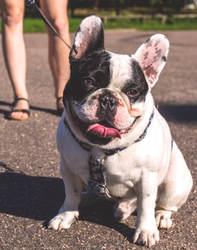 Summer is rapidly approaching, and it’s already hot outside. Even when the weather is moderately warm, the temperature inside a parked car can rise dangerously high. Heat and humidity put dogs at risk of heat stroke, which can be fatal. Dogs rely mostly on panting to cool themselves (they sweat only a little from their paw pads). But panting isn’t always enough to keep a dog’s body temperature in the normal range, from about 100°F to 103°F. As the body temperature rises above normal, dogs can develop heat exhaustion. Heat stroke (in dogs) is defined as a body temperature over 105.8°F along with central nervous system dysfunction. Heat stroke is a serious medical emergency and has a reported death rate of about 50% in dogs. It damages the brain, kidneys, heart, intestines, and other internal organs, and it causes blood clotting disorders. Causes of heat stroke Heat stroke is caused either by exposure to heat and humidity or by strenuous physical exertion. These are situations that commonly lead to heat stroke in dogs:
Justine Lee, DVM, DACVECC, an emergency veterinary medicine specialist, recommends not exercising with your dog if the temperature (in Fahrenheit) plus the humidity level is over 150. So when the temperature is 80°F and the humidity level is 80%, it’s too hot to take your dog on a run (80 + 80 = 160). Dogs at risk Although any dog can develop heat stroke, the risk is higher in dogs with these conditions:
Signs of heat stress Dogs start showing signs of heat exhaustion before they develop full-blown heat stroke. Watch for the warning signs, which become more severe as heat stroke sets in:
If you see signs of heat exhaustion in your dog, carry him to a cooler place immediately; at least get him into the shade. Wet him down with cool water (ice is not necessary) and give him water if he’s able to drink on his own. Take him to a veterinary clinic right away if he has any of the more severe signs or if you’re not sure whether he’s OK after a few minutes. It’s much better to take in a dog who turns out to be fine than to delay treatment for a dog who has heat stroke. Preventing heat stroke
Sources
Photo by Kasia Koziatek |
AuthorLaurie Anne Walden, DVM Categories
All
Archives
April 2024
The contents of this blog are for information only and should not substitute for advice from a veterinarian who has examined the animal. All blog content is copyrighted by Mallard Creek Animal Hospital and may not be copied, reproduced, transmitted, or distributed without permission.
|
- Home
- About
- Our Services
- Our Team
-
Client Education Center
- AKC: Spaying and Neutering your Puppy
- Animal Poison Control
- ASPCA Poisonous Plants
- AVMA: Spaying and Neutering your pet
- Biting Puppies
- Boarding Your Dog
- Caring for the Senior Cat
- Cats and Claws
- FDA warning - Bone treats
- Force Free Alliance of Charlotte Trainers
- Getting your Cat to the Vet - AAFP
- Holiday Hazards
- How To Feed Cats for Good Health
- How to Get the Most Out of your Annual Exam
- Indoor Cat Initiative - OSU
- Introducing Your Dog to Your Baby
- Moving Your Cat to a New Home
- Muzzle Training
- Osteoarthritis Checklist for Cats
- What To Do When You Find a Stray
- Our Online Store
- Dr. Walden's Blog
- Client Center
- Contact
- Christmas Party 2023
|
Office Hours
Monday through Friday 7:30 am to 6:00 pm
|
|
Site powered by Weebly. Managed by IDEXX Laboratories

 RSS Feed
RSS Feed

